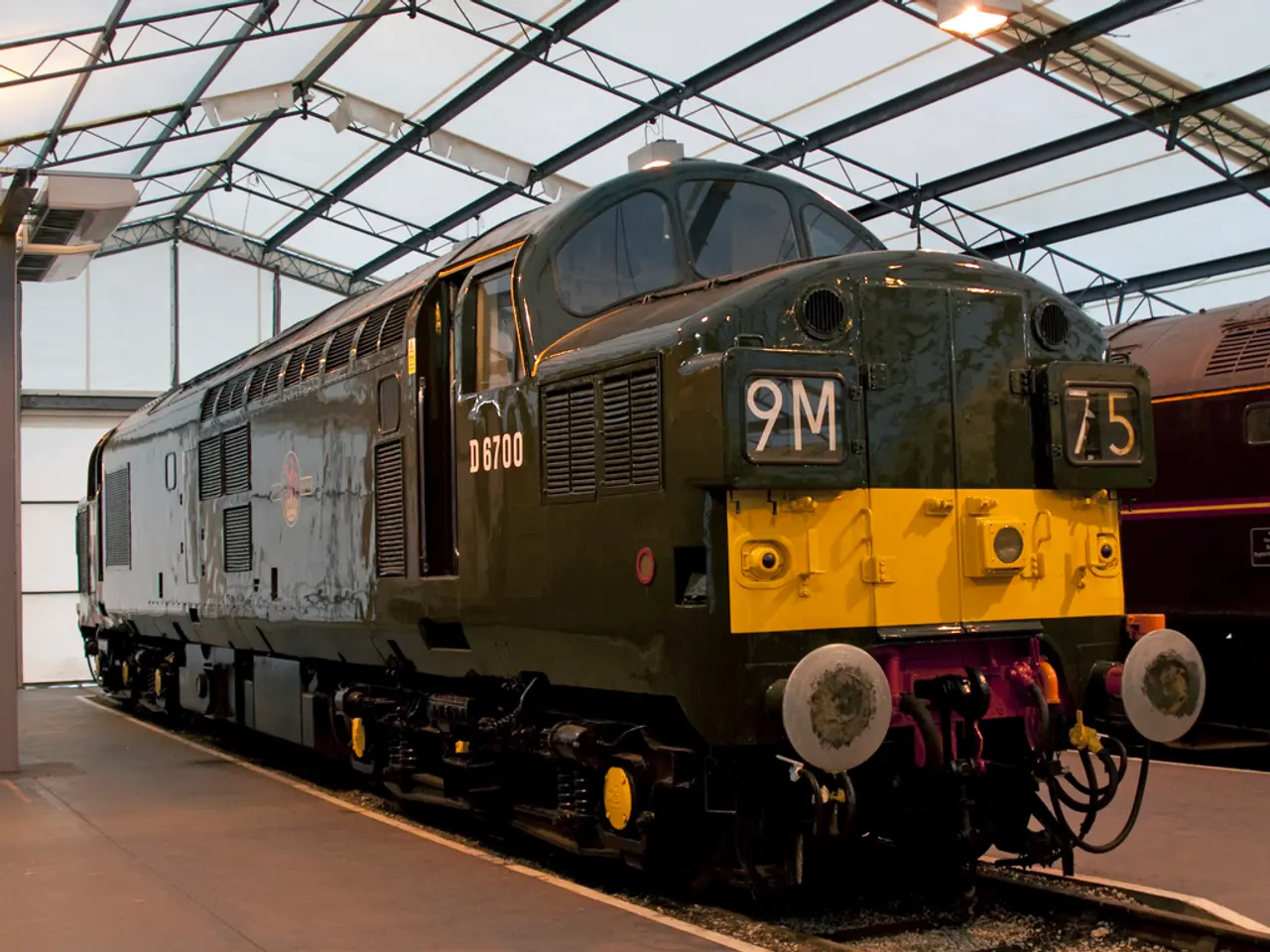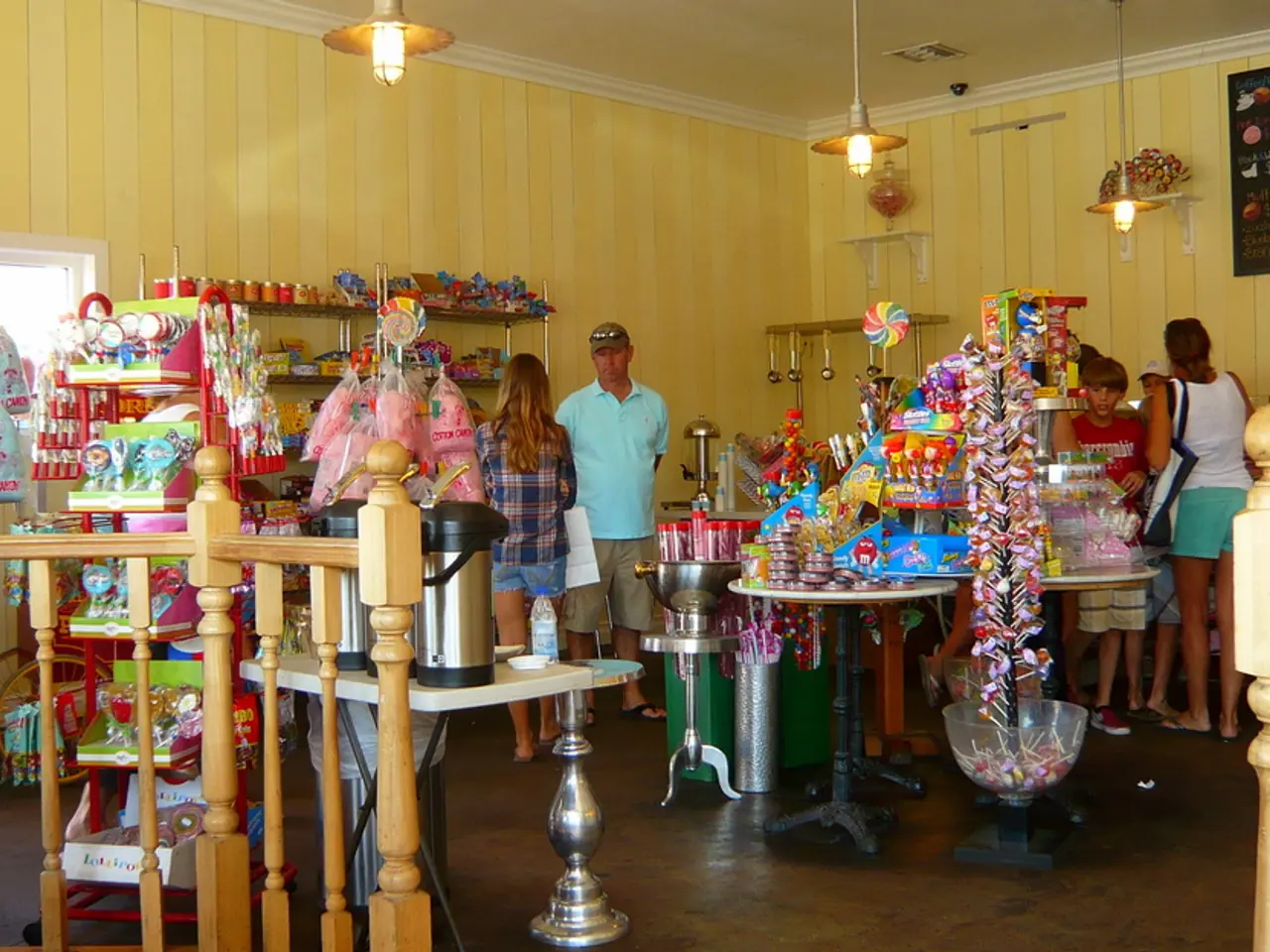Majority of the Railway Track has been Laid (80%)
## City Transportation Systems' LRT Line and the Natural Rusting of Rails
In the heart of the city, the ongoing construction of the Light Rail Transit (LRT) line, managed by City Transportation Systems (CTS), is progressing steadily. As of July 10, the project has completed 80% of its construction, with 18 kilometers of track structure already in place, out of a total length of 22.4 kilometers.
One question that has arisen in the course of the LRT line's construction is the natural rusting of the rails. This phenomenon, also known as corrosion, is a common occurrence in steel rails exposed to environmental factors such as moisture, oxygen, and the presence of salts or other corrosive substances.
### The Cause of Rusting
The formation of rust on the LRT rails is primarily due to the steel's reaction with oxygen and moisture, which are prevalent in urban environments. The rails are often exposed to rain, humidity, and other forms of moisture, which can hasten rust formation. Additionally, the presence of salts, acids, or other corrosive substances can accelerate the rusting process.
### The Impact of Rust on Rail Strength and Operational Characteristics
Rust can significantly affect both the strength and operational characteristics of LRT rails. Rust weakens the steel by reducing its cross-sectional area and damaging its structure, potentially leading to a decrease in the rail's load-bearing capacity and increasing the risk of rail breakage.
Corrosion can also cause uneven wear, leading to rough rail surfaces. This can result in increased noise, vibration, and reduced train speed, ultimately affecting the overall efficiency and safety of the transportation system. Moreover, regular maintenance is necessary to mitigate the effects of corrosion, which can be costly and may require temporary shutdowns of rail lines.
### The Unique Case of the LRT Line
Unlike household or automotive items, the rails for the LRT 2025 project are not painted or lacquered due to technical requirements. All rails for the project are new and produced specifically for this project, made of carbon or low-alloy steel with a high iron content.
Interestingly, the appearance of rust on new rails is a natural and safe phenomenon, not indicative of defects. Rust on the rails does not affect their strength and operational characteristics, as the standard feature of rusting in the rail steel does not impact the safety and durability of the rails.
To address the issue of rusting, the LRT line's track structure will clean the working surface of the rails during operation, causing the rust to disappear. This innovative design ensures that the LRT line operates efficiently while minimising the impact of rust on the rails.
The track laying work for the LRT line continues according to schedule, with the completion of the track structure planned by the end of August 2025. With this progress, the city is one step closer to a more efficient and sustainable transportation system.
The steel rails used in City Transportation Systems' (CTS) Light Rail Transit (LRT) line, despite being new, show signs of natural rusting due to their exposure to environmental factors like moisture, oxygen, and corrosive substances. This rust, however, does not impair the strength or operational characteristics of the rails, as the LRT line's innovative design includes periodic cleaning of the rail surface during operation, causing the rust to vanish.
In the finance industry, the ongoing construction of the LRT line by CTS is a significant investment, with the total cost estimated to boost the city's economic development, while the transportation sector will benefit from the more efficient and sustainable transportation system upon its completion.




